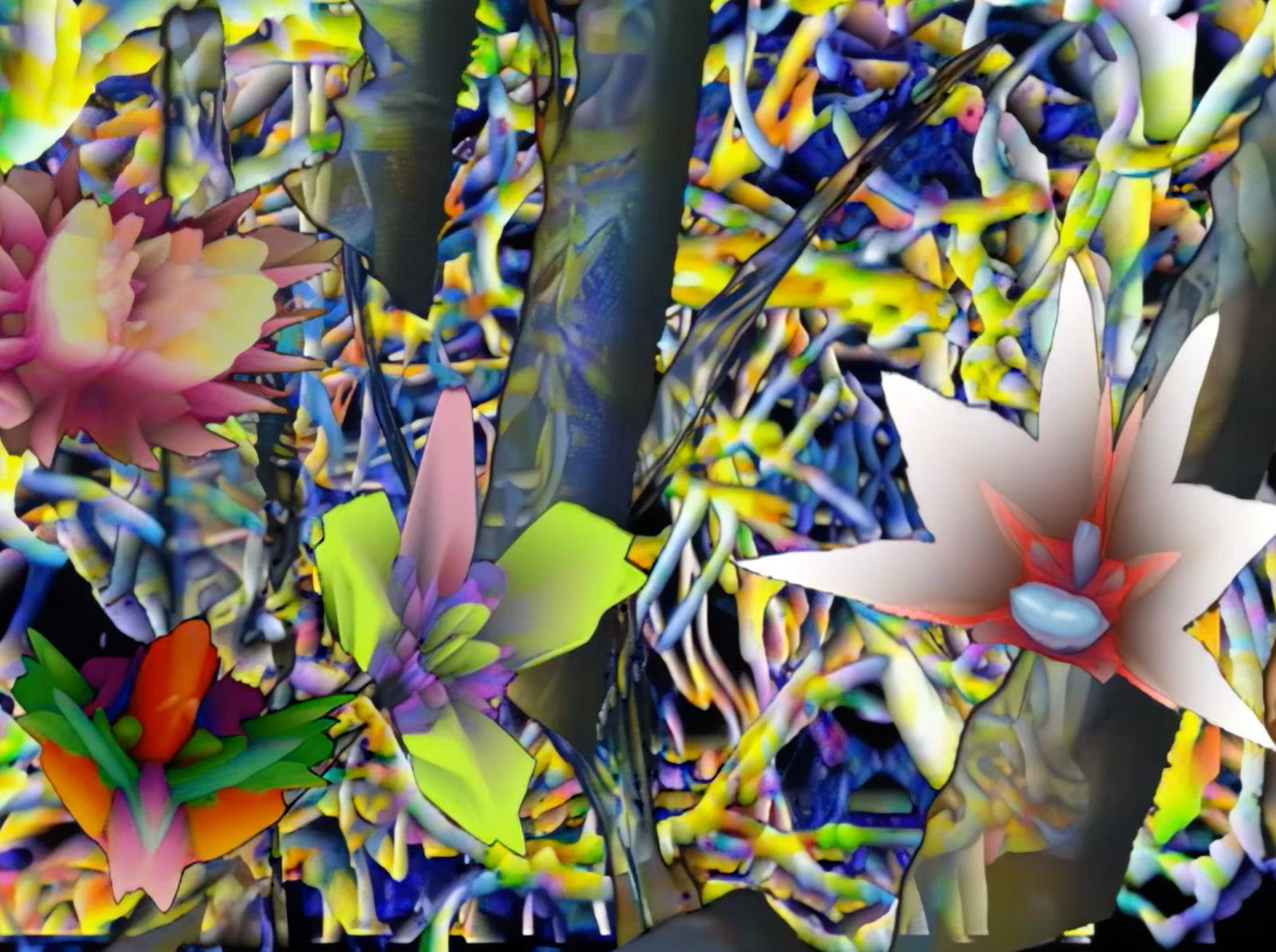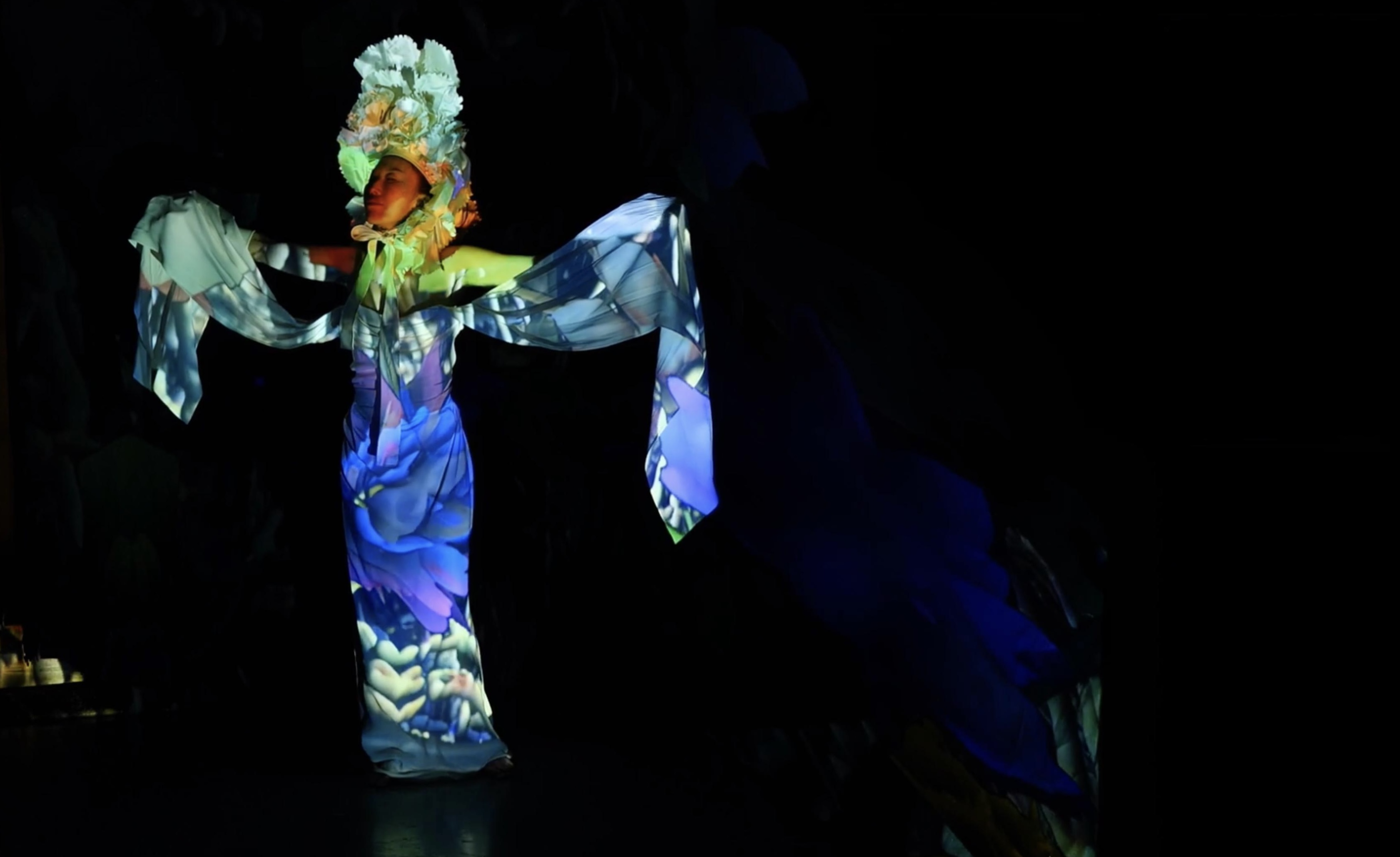
- Date
- 21 MARCH 2024
- Author
- TAFARI HINDS
- Image by
- ARTIST
- Categories
- Aesthetics
Unveiling Nature's Stylish Influence with “Flora, Goddess of Flowers"
Welcome to an exclusive conversation with Phil Dobson & Brigitte Stepputtis, the visionary minds behind the breathtaking collaboration, 'Flora, Goddess of Flowers' a film crafted for the 2023 Mdina Cathedral Contemporary Art Biennale, inspired by the theme of Mediterranean Goddesses. Conceived by Brigitte Stepputtis, Mirei Yazawa, and Phil Dobson, with evocative sound by Ben Grant, this cinematic journey pays homage to the iconic figure of Flora, as depicted in Ovid's Fasti. In this exploration, we delve into the depths of their creative process, revealing the magic that brings ancient myths to life through a blend of fashion, technology, and imagination.
Phil Dobson, a master of animation, breathes vitality into 'Flora' by seamlessly merging dance movements with digital manipulation. Drawing inspiration from nature's symphony and timeless tales of transformation, Dobson's work transcends traditional boundaries, captivating audiences with its enchanting allure.
Brigitte Stepputtis, the esteemed Global Head of Couture at Vivienne Westwood, lends her expertise to 'Flora's' visual identity, infusing each costume with a harmonious blend of haute couture elegance and timeless allure. From the delicate nymph phase to the grandeur of the floral temple, Stepputtis' designs serve as a testament to the enduring marriage of tradition and innovation.
As we navigate their creative journey, we uncover profound insights into the evolving landscape of fashion and technology. From the emergence of bio-fabrication to the symbiotic relationship between art and science, Stepputtis envisions a future where sustainability and sophistication converge to shape the very essence of beauty.
Join us on this exhilarating voyage, where ancient myths and modern innovation intertwine to craft a visual masterpiece that transcends time and space. 'Flora, Goddess of Flowers' is not just an artistic creation; it's a testament to the transformative power of creativity and the limitless possibilities that arise when nature's beauty meets human ingenuity.

Can you share some insights in the technical magic behind animating Flora, and the choice of techniques that helped bring her to life?
Phil: My art practice started at a time when the application of computer technology to art was in its infancy and so I have always approached the use of digital technology in art as a counterpoint, not a replacement of traditional analogue materials i.e. paint etc. It was therefore important to me to combine real-world events i.e. the dance movements of Mirei Yazawa, with the digital manipulation of the projected flowers. I am not really a tech guy, so I used the software available on my Mac, and older versions at that—which diverge significantly from the up to date versions. I usually approach the use of this technology intuitively, experimentally, with trial and error, perhaps as a painter might use paint. We first proposed this project over a year ago. Since then things have changed massively, especially in the fields of AI, VR, etc.—technologies which I haven’t touched. I have flirted with coding, but up to now haven’t used it in my own art practice.
How do you navigate the challenge of capturing the essence of living plants in a digital format, and what initially inspired you to explore the concept of Flora as a shapeshifting entity?
Phil: My animation of flowers partly derives from basic concepts of form such as symmetry—bilateral and radial, repetition etc.—as well as my interest in natural history. I was partly inspired by the work of the 18th-century German writer Goethe in his book The Metamorphosis of Plants, in which he suggested there was a basic form from which all plants could be derived, that there was an inner logic to the form. I felt this could be translated into the logic of digital technology, possibly with coding and generative software. I took a different route, with my abstract paintings being the starting point for the animations. The forms I began to generate gradually diverged more and more from the original source. However, the colour of the flowers more or less directly relates to the colour in the paintings. I usually did not alter it (apart from perhaps slightly changing the saturation or balance). One of the main sources regarding the goddess Flora (apart from Italian Renaissance artist Botticelli’s painting Primavera) was Roman poet Ovid’s description of her life. Ovid described many metamorphoses of gods and goddesses, so there was a familiarity with the idea of shapeshifting in ancient mythology, both classical and other systems. I have read a lot of science fiction and enjoyed playing with the idea of a creature which was part human, part flower. A fascination with metamorphosis in the animal world, for example butterflies and the mystery of what happens within the chrysalis, was of course also an inspiration.
The last third of the video represents the goddess Flora in the temple dedicated to her. I studied architecture, a discipline which has also changed with new technology and materials. We have envisaged this also as structures with transient forms which are themselves plant like.

Technology and nature. How do you envision this interaction shaping the future of art?
Phil: From my point of view, as someone who studied science at school, and remain keen on a closer relationship between art and science, I think there has been a sea change in the way artists now collaborate with scientists. The way technology has developed means that the power of visualisation of large data sets, for example, can mean artists can produce work which directly refers to the work of scientists; which means artists can represent nature in ways other than landscapes etc. This is evident I think in the book Visual Complexity, Mapping Patterns of Information by Manuel Lima.
Can you discuss specific examples where technology has been seamlessly integrated into the creative processes of fashion and art, leading to innovative outcomes?
Phil: I think there are obvious ones which are generative in their approach to form (3D rendering etc.) and 3D printing, but also as mentioned above, with the use of data in creating art. This leads also to the question of collaboration with experts in the field of digital technology and scientists, who are highly specialised and can help artists realise their vision. There is also the trend towards “immersive” installations which use various technologies. Mat Collishaw is someone who I admire for using various kinds of technology in a poetic way, but there are others.
Brigitte: There are quite a few examples of technology integrated into fashion and art. One of the most prominent is Iris van Herpen's avant-garde fashion, which merges 3D printing with traditional craftsmanship, creating stunning, sculptural couture designs, which is currently shown in Paris. Another example was the Manus x Machina exhibition at the Metropolitan Museum in New York, which showcased garments featuring advanced techniques like laser cutting and digital manipulation of textiles, highlighting technology's role in contemporary fashion.
Björk's Biophilia album included interactive apps, merging music with gaming and animation, demonstrating technology's creative potential in music. And, TeamLab's digital art installations in Tokyo, which blend technology, nature, and human interaction, redefining the boundaries between art and technology. Of course there is so much more, most recently the SYKY exhibit during the London Fashion Week and other digital fashion weeks and platforms, and countless artists working in these cross over disciplines.



As Head of Couture at Vivienne Westwood, your expertise in fashion must have greatly influenced the costume design for Flora. How did you navigate blending high fashion with ancient mythology, and visual aesthetic?
Brigitte: The styling of the dancer Mirei depended on various factors, one of which was the material, which needed to be reflective, and respond to the projection. Another factor was the mobility. We tried various styles and in the end I opted for a style from the Vivienne Westwood bridal collection, which has a timeless floating cut, almost Grecian, which ended up being the perfect for both the story and it worked with the technology. In the first part of the film, the ‘nymph phase’, it is an almost childlike dress, because this represents the early, innocent time. At the later stages, after the metamorphosis I added some more dramatic headpieces from the Andreas Kronthaler for Vivienne Westwood collection to emphasise the floral character in the outfit. I am very fortunate to have access to the amazing Vivienne Westwood archive, which I was allowed to use.
In an earlier project known as "We Are Stardust" in collaboration with ScanLab Projects what aspects of scanning technology resonated with you the most and why did it spark the idea for combining it with fashion photography?
Brigitte: I found the monochromatic aesthetic of the presentation particularly captivating, reminiscent of classic engravings. As someone who is always intrigued by new technology, I appreciated how the scanning process generated a 3D image that allowed the exploration of the scenery from different angles to uncover a narrative, as I later did in the film. Additionally, the ability to find the perfect angle during post-production added another layer of creative control and immersion.
Reflecting on your decision to experiment with new technologies a decade ago, how do you perceive the advancements that have occurred since then, and how have they impacted your creative process?
Brigitte: The evolution of scanning technology over the past decade has been remarkable, with advancements that are almost unrecognisable from the early days. Now, scanning apps on smartphones have become commonplace. I have some on my phone, since they are easily accessible now and the technology has entered into everyday life.


What intrigued you the most about the Flora project?
Brigitte: What intrigued me most about the project was its fusion of classical mythology with modern technology. I like the fact that there is a real human expressing herself through dance, who goes through this metamorphosis and then almost gets absorbed by the plant temple and turns into a flower herself.
Technology and nature. How do you envision this interaction shaping the future of fashion?
Brigitte: There are great possibilities in this, as it is likely to lead to innovations in sustainable materials, such as bio-fabrication and new plant-based textiles, some of which already exist, like plant-based leather or materials made from algae or orange skins. These bio-fabricated textiles not only minimise waste, but also provide new opportunities within the design process and for customisation. Additionally, progress in wearable technology will enhance functionality and aesthetics, merging the organic with the digital seamlessly. This synergy will redefine the industry, prioritising eco-consciousness and technological sophistication in the creation and consumption of fashion.

Interview by @metafari_
Courtesy of Phil Dobson & Brigitte Stepputtis
Mirei Yazawa is wearing Vivienne Westwood Couture
Flora's Video Sound by Ben Grant
B&W Still Images from The Doll’s House from “We Are Stardust” by Brigitte Stepputtis in collaboration with Scanlab Projects Sound by Matty Skylab
Watch the full video below!